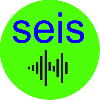Geophysical Methods
exploration, near surface and marine methods
Seismology |
Seismic exploration |
Seismic source |
Seismic Refraction |
Seismic Reflection |
Seismic MASW-REMI |
Borehole |
Marine Seismic |
Seismic Processing-Imaging |

Seismic Borehole
Borehole Downhole seismic testing is a downhole geophysical tool with the ability to obtain interval seismic velocity measurements (P-wave, Vp and Shear-wave, Vs). Downhole seismic testing measures the seismic velocity of the geological materials through which acoustic waves travel. Both compressional wave velocity (Vp) and Shear-wave velocity (Vs) at the borehole location can be measured using Downhole seismic testing. The results of the measured velocities are generally plotted against depth to show a 1D curve. Downhole seismic testing is affected by external seismic noise and is recommended to be utilised in areas of low seismic noise e.g. away from active drill rigs. Downhole seismic tomography is a downhole geophysical technology that can image the Vp distribution extending from the borehole. This is a different velocity analysis to the Downhole seismic testing interval velocity method. Shot locations are built-up in a grid around the borehole and if there is a dense enough distribution of shot locations the 2D cross-sections can be combined to produce Vp contour maps at chosen depth intervals. Parallel seismic is a downhole geophysical technology that can measure the Vp distribution along a borehole. This is a different velocity analysis to the Downhole seismic testing interval velocity method (commonly known as VSSP). A borehole is drilled in parallel with the subsurface structure (e.g. reinforced concrete pile) that is of interest, preferable with a separation no greater than 2 m apart. A seismic shot location is taken at the head (or top) of the pile and the seismic signal generate is measure along the downhole seismic array. Limitations with this method are similar to other seismic methods i.e. parallel seismic is affected by external seismic noise and is recommended to be utilised in areas of low seismic noise. Changes in seismic velocity are dependent on the density contrast of the sub-surface materials. If materials are of similar elastic and density properties then a change in velocity may not be observed. In contrast to borehole measurements which are point estimates, surface wave testing is a global measurement, that is, a much larger volume of the subsurface is sampled. The resulting profile is representative of the subsurface properties averaged over distances of up to several hundred feet. Although surface wave techniques do not have the layer sensitivity or accuracy (velocity and layer thickness) of borehole techniques; the average velocity over a large depth interval (i.e. the average shear wave velocity of the upper 30m or 100ft) is very well constrained. Because surface wave methods are non-invasive and non-destructive, it is relatively easy to obtain the necessary permits for testing. At sites that are favorable for surface wave propagation, active and passive surface wave techniques allow appreciable cost and time savings.PASTE RESPONSIVE AD
Borehole Geophysics: Useful in well to well lithology correlation, identifying fractures, groundwater velocity through fractures and calibrating depth conversions for seismic. Borehole Geophysical and Video Logging- Enables more detailed characterization of lithologic and groundwater flow conditions than cuttings, split-spoon samples, or core samples alone. An advantage of borehole techniques is that they can describe subsurface conditions in greater detail than surface-based methods. Crosshole Seismic Testing- Crosshole seismic measurements determine dynamic elastic moduli including shear modulus, Young's modulus, and Poisson's ratio. Seismic Tomography- Seismic tomography uses an array of borehole (and possibly surface) geophones or hydrophones to characterize materials outside a borehole. Multiple seismic source locations, both within the boreholes and along the ground surface, create intersecting seismic raypaths.
Another subset of exploration seismology is downhole seismology. Vertical seismic profile (or VSP) surveying involves recording the responses of geophones in a borehole or well for sources at the earth's surface. Likewise, a reverse VSP is collected using a source in the borehole and receivers at the surface. A crosshole survey measures the seismic responses of geophones in one borehole to a source in another borehole. Downhole methods are especially useful for accurately determining seismic P-wave and S-wave velocities since the distance of equipment down the hole is a known value. (In the crosshole case, this implies analysis using crosshole tomography.) Additionally, either the sources or receivers, or both, are much closer to the target than in surface reflection acquisition, and the seismic travel paths avoid at least one of two passes through the near surface weathering zone. As a result, downhole data can be used to construct very high-resolution images of the subsurface target region.
PASTE RESPONSIVE AD